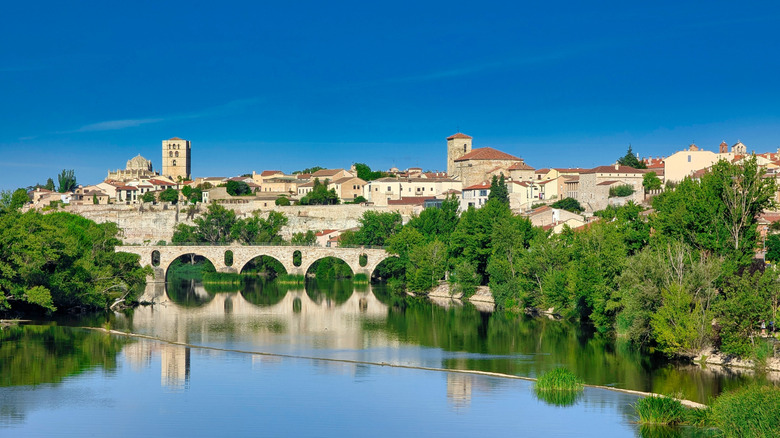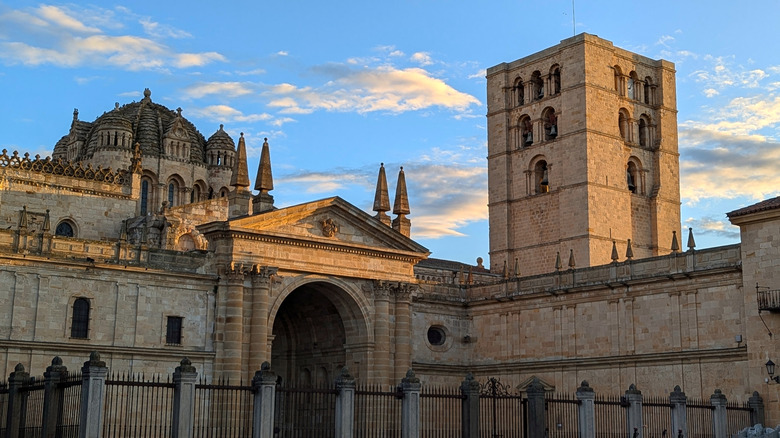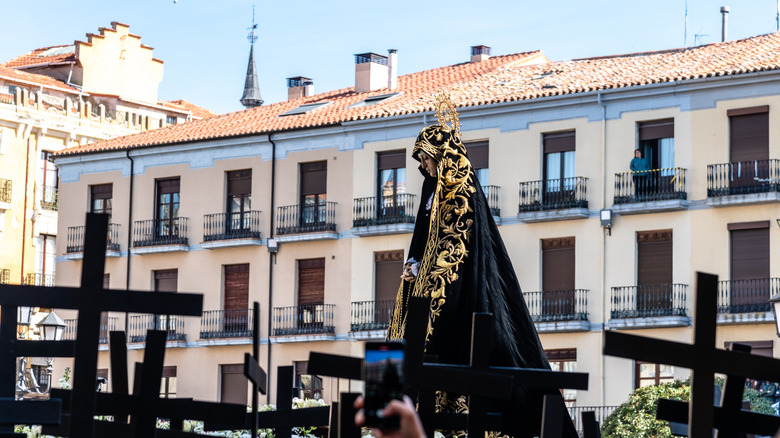The Breathtaking City With The Most Romanesque Churches In Europe
About an hour's train ride from Madrid lies a city that seems plucked straight from the pages of a medieval tale. Located in Spain (the best European country for road trips), Zamora offers a breathtaking detour into the past, with ancient walls, cobblestone streets, and sweeping views of the Douro River. But what truly sets it apart is its astonishing collection of over 20 Romanesque churches — more than any other city in Europe.
Some of Zamora's Romanesque treasures include the 11th-century Church of San Pedro, home to a stunning Flemish triptych, and San Claudio de Olivares, which features an agricultural calendar intricately carved into one of its arches. The tower of San Vicente is a masterpiece of medieval craftsmanship, while the Cathedral of Zamora dazzles visitors with its domed ceiling and sculptures of saints in the choir stalls.
But there's more to Zamora than its churches. Wander through the food markets for a taste of the city's renowned Zamorano cheese, cross the medieval stone bridge for breathtaking views, or step into the Castle of Zamora for a journey into northern Spain's battle-stricken past. If you visit during Holy Week, you'll find yourself in the midst of some of the most impassioned celebrations in the country.
The Spanish city of Zamora has plenty of Romanesque architecture
While Zamora's fame rests largely on its Romanesque architecture, the city's story begins much earlier. First settled in the Bronze Age, Zamora has witnessed many civilizations, including the Romans, Visigoths, and Umayyads. Relics from these eras — some as ancient as the Paleolithic — can be admired in the Museum of Zamora. By the High Middle Ages, Zamora was a fortified Christian city. It endured numerous battles, including a legendary seven-month siege by Sancho II, which gave rise to the Spanish expression, "Zamora wasn't won in an hour."
During this tumultuous time, many of Zamora's churches were built. Romanesque architecture, known for its rounded arches, thick walls, and towers, flourished here. The Bishop's Gate, marking the city's entrance, is a fine example of this style. After passing through the gate, head to the Church of Santa María Magdalena, where you'll see famed funerary art, including finely sculpted tombs. The Church of San Juan de Puerta Nueva, located at Plaza Mayor, captivates visitors with its ornate arches and a stunning rose window. Meanwhile, the Church of San Cipriano's plain exterior belies the intricate carvings on its columns, featuring medieval scenes that invite closer inspection.
While Valencia is one of Europe's largest historical centers, Zamora's own claim to fame is its collection of Romanesque landmarks. At the heart of it all is the Cathedral of Zamora, a pinnacle of Romanesque design. Its three naves, Byzantine-inspired dome, and Tower of the Savior leave visitors in awe. Inside, you'll be mesmerized by the Chapel of San Ildefonso's shimmering silver altarpiece and the vivid San Cristóbal fresco. Every corner reveals carvings and symbols that historians are still decoding, which is a testament to Zamora's enduring mysteries.
What to do in Zamora after a church tour
Zamora is a haven for history and architecture lovers alike. Begin your exploration with the city's historic walls — three layers of fortifications that protected the city through centuries of conflict. For a leisurely stroll, cross the stone bridge over the Douro River, which was once the only route into the city and is now a vantage point for stunning views of Zamora's skyline. The Castle of Zamora, dating back to the 11th century, boasts a dramatic moat and rounded towers. Climb to the top for unparalleled panoramas of the city and river below.
Time your visit for Holy Week in spring, and you'll witness Zamora at its most theatrical. The city comes alive with parades featuring religious floats carried by local brotherhoods, streets filled with music, and a festive, yet reflective, atmosphere that combines reverence and revelry. Processions weave through the Plaza Mayor, where the city's Renaissance architecture provides a breathtaking backdrop.
In the heart of Zamora, Plaza Mayor is the go-to spot for tapas and local markets. The square is a vibrant center where locals and visitors gather to sit at a terrace café to enjoy a glass of wine or explore the shops and artisan stalls that often pop up. Just a 15-minute walk away is the Mercado de Abastos de Zamora, an outdoor food market where you can sample the region's finest produce. The coastal Basque region is a hidden haven for food and wine in Spain, but Zamora holds its own with its exceptional local specialties. Don't leave without trying Zamorano cheese, a rich sheep's milk delicacy perfected over a century ago. Pair it with some local wine, and you'll understand why Zamora is a feast for the senses and the soul.


